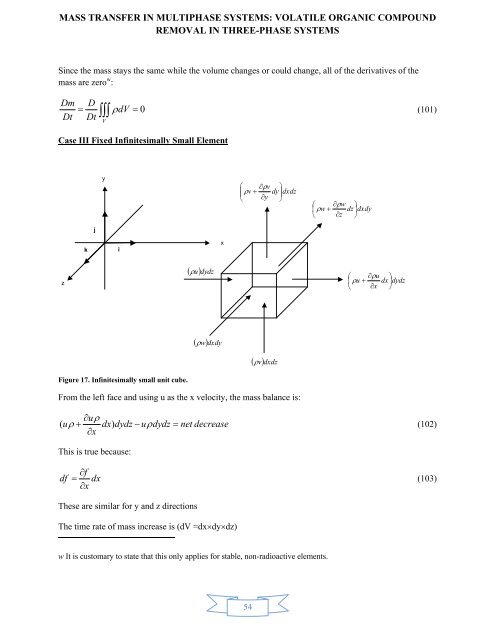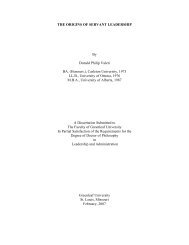mass transfer in multiphase systems - Greenleaf University
mass transfer in multiphase systems - Greenleaf University
mass transfer in multiphase systems - Greenleaf University
You also want an ePaper? Increase the reach of your titles
YUMPU automatically turns print PDFs into web optimized ePapers that Google loves.
MASS TRANSFER IN MULTIPHASE SYSTEMS: VOLATILE ORGANIC COMPOUND<br />
REMOVAL IN THREE-PHASE SYSTEMS<br />
S<strong>in</strong>ce the <strong>mass</strong> stays the same while the volume changes or could change, all of the derivatives of the<br />
<strong>mass</strong> are zero w :<br />
Dm<br />
<br />
Dt<br />
D<br />
dV<br />
0<br />
Dt<br />
(101)<br />
V<br />
Case III Fixed Inf<strong>in</strong>itesimally Small Element<br />
j<br />
y<br />
v <br />
v<br />
<br />
dydxdz<br />
y<br />
<br />
w <br />
w<br />
<br />
dzdxdy<br />
z<br />
<br />
k<br />
i<br />
x<br />
z<br />
<br />
udydz<br />
u <br />
u<br />
<br />
dxdydz<br />
x<br />
<br />
<br />
wdxdy<br />
<br />
vdxdz<br />
Figure 17. Inf<strong>in</strong>itesimally small unit cube.<br />
From the left face and us<strong>in</strong>g u as the x velocity, the <strong>mass</strong> balance is:<br />
u<br />
( u<br />
dx)<br />
dydz udydz net decrease<br />
x<br />
(102)<br />
This is true because:<br />
df<br />
f<br />
dx<br />
(103)<br />
x<br />
These are similar for y and z directions<br />
The time rate of <strong>mass</strong> <strong>in</strong>crease is (dV =dxdydz)<br />
w It is customary to state that this only applies for stable, non-radioactive elements.<br />
54



